Canon EOS T5 1200D review
-
-
Written by Ken McMahon
Intro
The EOS Rebel T5, or 1200D as it’s known outside of North America, is Canon’s latest entry-level DSLR. Launched in February 2014 it replaces the three year old T3 / 1100D. Three years is a long time in this industry, during which time mirrorless cameras have really gone after the budget DSLR market. So what’s new on the T5 / 1200D to attract entry-level buyers?
The new T5 / 1200D updates the sensor resolution to 18 Megapixels, adds a bigger 3 inch 460k dot screen with double the resolution of its predecessor, offers improved 1080p30 movies and an extended sensitivity range up to 12800 ISO. There’s also a free smartphone app packed with well-crafted interactive tutorials which will be useful to both beginners and those wanting to confirm certain features or controls.
Between the T5 / 1200D and its predecessor, Nikon has had two bites at the upgrade cherry; first with the D3200 then, launched a month before the T5 / 1200D, the D3300. This is the model that competes head-to-head with the T5 / 1200D and I’ve compared and tested the two alongside each other in my review. I’ve also added a third model into the mix, not a DSLR, but Sony’s entry-level mirrorless camera, the A3000. This is styled like a traditional DSLR, but employs 100% electronic composition and is priced lower than its rivals. Read on to discover which of these three is the best option for anyone taking their first steps into photography with an interchangeable lens camera.
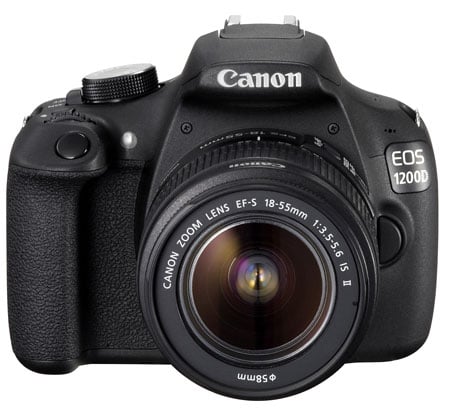
Canon EOS T5 / 1200D design and controls
Beyond some very minor design modifications and some slight re-arranging of the controls, the EOS T5 / 1200D looks almost identical to the earlier T3 / 1100D. The dimensions – 130x100x78mm are the same to within a fraction of a millimetre and the new model is a mere 15g lighter. The most apparent differences are on the back panel which now accommodates a slightly bigger 3 inch LCD TFT screen with a 460k dot resolution. As the T5 / 1200D has an optical viewfinder, the screen can be switched off, or display shooting information by pressing the display toggle button.
For comparison, the Nikon D3300 body measures 124x98x76mm and weighs 460g with battery, while Sony’s Alpha A3000 measures 128x91x85mm and weighs 411g with battery; so all three are roughly in the same ballpark, and thanks to its traditional DSLR styling, you wouldn’t be choosing the A3000 over its rivals on the grounds of space or weight-saving.
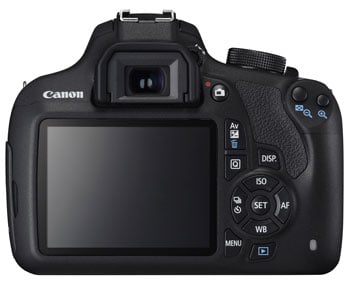 |
In live view mode the Canon screen provides a bright contrasty image that can be seen from a wide angle – 170 degrees according to the specification. Like all screens it’s an effort to use in bright sunlight, but it coped better than the Sony A3000’s screen which is very difficult to see in bright sunshine. Of course with an optical viewfinder available this isn’t such an issue unless you’re shooting movies. It’s worth noting that thanks to its 100% electronic composition, you can use the screen or the viewfinder to frame movies on the A3000, whereas on DSLRs you can only use the screen for movies.
All of the T5 / 1200D’s rear panel controls are arranged on the right side of the screen. The familiar Canon four-way controller provides dual-function buttons for menu navigation and direct access to ISO, AF, white balance, and drive modes. There’s the tried and trusted Q button for quick access to settings, a dedicated exposure compensation button and menu and playback buttons.
At the top of the rear panel to the right of the viewfinder is the button for switching to live view which doubles up as the movie record button when the mode dial is in the movie position. Finally, two buttons to the right of the thumb rest provide AE lock and AF point selection, and double up as playback zoom controls.
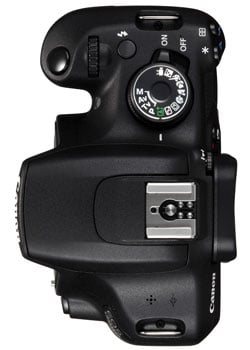 |
The T5 / 1200D has a pentamirror optical viewfinder which shows 95 percent of the image area with a 0.8x magnification factor. That’s the same specifications as the earlier T3 / 1100D and similar to the Nikon D3300 which has 95 percent and 0.85x. In practice though, the D3300’s viewfinder is significantly bigger than the T5 / 1200D’s.
The T5 / 1200D’s 9 AF points are permanently etched on the viewfinder screen and flash red when activated. As on all Canon SLRs, exposure information including ISO is displayed at the bottom of the frame. The D3300 is very similar with etched illuminating AF points – 11 in this case – and exposure information, in green, rather than red, along the bottom. There’s no ISO readout on the D3300 in PASM modes though. The Sony A3000 has an electronic viewfinder which by today’s standards is quite basic. With a resolution of 210k dots the 0.2 inch panel looks quite coarse; it’s a little smaller than the T5 /1200D’s optical viewfinder and not nearly as bright. It also lags compared to an optical viewfinder, but provides more of a what you see is what you get view; for example under or over-exposure are immediately apparent and you can preview effects, frame movies and enjoy 100% coverage. But, in my view, if you plan on shooting primarily with the viewfinder either of the DSLRs will provide a better experience. For a larger and more detailed electronic viewfinder, you’ll need to consider the next Sony up in the range, the A6000.
The T5 / 1200D’s built-in flash is popped up using a button just behind the main dial on the top of the grip. It’s not as odd a place for it as you might think because it’s programmable and can be assigned to ISO sensitivity. The flash is the same unit as on the earlier T3 / 1100D with a Guide Number of 9.2 in metres at 100 ISO. That’s a little less powerful than the Nikon D3300’s built-in flash which has a Guide Number of 12 and also offers wireless control with compatible Nikon units. With a GN of 9.2 the Sony A3000’s built-in flash has the same power output as the T5 / 1200. Both the T5 / 1200D and D3300 have a hotshoe, as does the Sony A3000, but the latter is Sony’s multi-interface shoe which can take an external flash as well as other accessories.
A flap on the left side of the T5 / 1200D’s body conceals the camera’s ports – a mini HDMI connector and USB port plus a remote control terminal compatible with the RS60-E3 cable remote, but the T5 / 1200D isn’t compatible with Canon wireless remote controllers.
The Canon 1200D’s combined battery and card compartment is in the base of the grip. Both the D3300 and Sony A3000 have separate card compartments accessed via a side door, but Canon did away with this arrangement on the earlier T3 / 1100D. It keeps the cost down, but makes it impossible to change the card with the camera mounted on a tripod.
The T5 / 1200D’s LP-E10 battery provides enough power for 500 shots under CIPA standard conditions, that’s a significant drop on the 700 shot capacity of its predecessor, and, coincidentally, also 200 short of the Nikon D3300’s 700-shot capacity. Due to its lack of an optical viewfinder the Sony A3000 provides a more modest 460 shots, although that is pretty close to the Canon.
Canon EOS T5 / 1200D lens and stabilisation
The T5 / 1200D employs an EF lens mount and is fully compatible with both Canon EF and EF-S lenses. Thanks to its APS-C sensor size, all lenses effectively have their field of view reduced by 1.6 times. The T5 / 1200D is available as a kit with either the non-stabilzed EF-S 18-55mm f3.5-5.6 III or the EF-S 18-55mm f3.5-5.6 IS II stabilized kit lens. If you shop around the price difference is marginal and in some outlets the two are the same, in which case I can’t think of a good reason not to opt for the kit with the stabilised lens. Both the Nikon D3300 and Sony A3000 kits come with stabilized 18-55mm f3.5-5.6 kit lenses.
Canon EOS T5 / 1200D with 18-55mm wide | Canon EOS T5 / 1200D with 18-55mm tele |
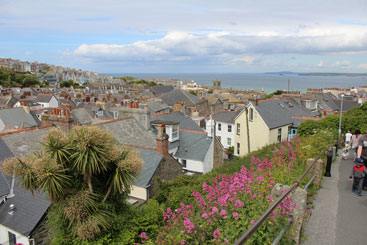 |  |
| 18-55mm at 18mm (29mm equiv) | 18-55mm at 55mm (88mm equiv) |
For my review Canon supplied the T5 /1200D with the unstabilized EF-S 18-55mm f3.5-5.6 III; note that the product shot at the top of the review shows the EF-S 18-55mm f3.5-5.6 IS II kit lens.
Canon EOS T5 / 1200D shooting modes
The EOS T5 / 1200D’s mode dial offers the same options as its predecessor. In addition to the PASM modes there’s Scene intelligent auto, Flash off mode, Creative Auto, five scene mode positions and finally Movie. It makes sense to have scene modes on an entry-level model, but their inclusion does make for a busy mode dial. What’s more, it doesn’t rotate through 360 degrees from the last position back to the first, which means it’s a long haul from Movie mode back to the PASM modes at the other end of the dial.
Despite its name change and a slightly different icon, Scene auto detect doesn’t appear to function any differently to the green square auto mode on the T3 / 1100D. Which is to say that in Live view it doesn’t use scene detection as employed on Canon’s IXUS and PowerShot compacts. Though it does go further than Program auto mode in that it automatically switches to continuous AF for moving subjects, selects an appropriate metering mode and picture style. Of course, the point of a DSLR is that it allows you to take control of exposure settings to extend and improve your photography, but if you like the security of auto modes, both the Nikon D3300 (in live view) and Sony A3000 provide more sophisticated auto modes with scene detection.
The other thing the EOS T5 / 1200D lacks in comparison with the D3300 and A3000 is a suite of effects filters. On an entry level camera which for many will be a step up from a phone or a point-and-shoot compact it’s hard to see this as anything other than a big mistake. How can it be that Canon’s higher end DSLRs like the 650D and 70D offer scene detect in live view and Creative effects filters when its entry level model doesn’t? One answer is that the more expensive models employ the newer Digic 5 processor where the T5 / 1200D uses the older, less expensive Digic 4. That said, Creative auto does at least offer a selection of ‘Ambience’ picture style options a few of which are shown below. The top row shows the Standard, Vivid and Intense settings with tinted monochrome options on the bottom row. If you’re shooting RAW +JPEG you get the unadulterated RAW file to fall back on should decide you don’t want the effect.
Shutter speeds between 1/4000 to 30 seconds are available, along with a Bulb option in Manual. Exposure Compensation is offered in a broad range of +/-5EV, the same as on the Nikon D3300 but, as on the earlier T3 / 1100D, Auto Exposure Bracketing is only available in the usual three frames with up to 2EV between them in 1/3EV increments. That said, it’s better than the Nikon D3300 in this regard, which offers no exposure bracketing at all. The Sony A3000 provides an exposure compensation range of +/- 3EV and three frame auto AE bracketing up to +/- 3EV.
 |  |  |
 |  |  |
Canon EOS T5 / 1200D movie modes
In a major upgrade over its predecessor, the EOS T5 /1200D now offers 1080p HD video. As on other Canon APS-C DSLRs you can choose to shoot in 1080p at 24, 25 and 30p. There are also 720p50 and 720p60 options as well as 640×480 at 25 or 30fps. Files are saved using the H.264 codec in a QuickTime wrapper with a .mov file extension in the same folder as still images.
The maximum time per file remains 29 minutes and 59 seconds, but if the file size reaches 4GB a new file is created and recording continues. HD files are encoded at an a average bit rate of 330MB/min so the 4GB mark will occur after around 12 minutes, if you want to shoot for longer than that be sure to use a card with a capacity of more than 4GB. A fully charged battery should last for around an hour and a quarter of recording and you’ll need a Class 6 (or higher) SD card to support the maximum recording times.
Audio is recorded using a built-in mono microphone, and there’s no option to connect an external microphone. This is where its rivals take a lead, as Nikon’s D3300 has as a 3.5mm jack for connecting an external mic and Sony’s A3000 can accommodate a proprietary microphone accessory on its hotshoe. The EOS T5 / 1200D has no continuous autofocus mode for movies which, again, is something that’s included on the Nikon, however, it’s not what you’d call one of the D3300’s strong points. If continuous AF for movies is a priority for you the Sony A3000 makes a much better job of it out of these three; if you want really good continuous AF during movies, I’d recommend upgrading to the Sony A6000.
As on its predecessor, you can focus before recording, you can also refocus during a shot by half-pressing the shutter release, providing you first enable the AF w/ shutter button feature from the movie menu, but it’s a single-shot process which can take a few seconds at a time and is quite distracting if recorded in the video.
In another major improvement to its movie capabilities, Canon has provided the EOS T5 / 1200D with full manual exposure control. You can manually set the aperture, shutter speed and ISO sensitivity prior to shooting and even adjust exposure during recording though unfortunately the main dial makes a very audible clicking sound that’s pretty intrusive.
| |
|---|---|
| |
|
| |
|---|---|
| |
|
| |
|---|---|
| |
|
Canon EOS T5 / 1200D handling
The Canon EOS T5 / 1200D has a lot to recommend it in handling terms as an introduction to DSLR photography. The controls are nice and big, clearly labelled, and well spaced. The menu system is clear, logically organised and easily navigable. And Canon’s Q menu has incrementally improved over the years to the point where it’s arguably one of the best methods for changing shooting settings on a non touch-screen camera.
The Creative auto position on the mode dial provides a gentler introduction to picture styles and depth of field control than diving straight in, but beyond that, Canon doesn’t offer much help to novices. The Feature Guide provides a brief explanation of each mode when you select it on the mode dial, and gives a one-sentence explanation of Q menu options, but there’s a lack of more detailed in-depth help. This is something both Nikon and Sony have put more thought and effort into. The Sony A3000 has a comprehensive guide that explains how to get the best from different subjects. And the Nikon D3300’s Guide mode not only provides explanations of what to do but changes the appropriate settings for you.
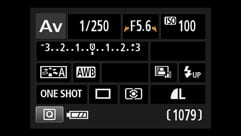 | 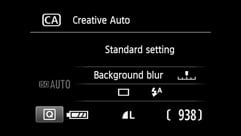 | 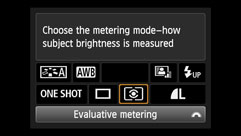 |
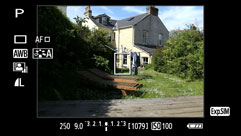 | 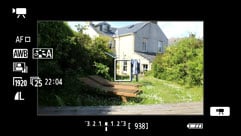 | 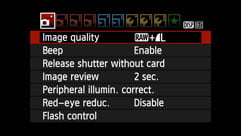 |
The EOS T5 / 1200D provides good customisation options for an entry-level DSLR. Mostly, these are available via the Custom functions menu which has 11 settings including Exposure level increments, AE lock button functions, Set button functions, and Flash button function. The latter can be set to either raise the flash or, if you don’t plan on using the built-in flash, assigned to manual ISO sensitivity setting.
Canon has retained the earlier T3 / 1100D’s 9-point AF system with a single cross-type sensor in the middle. You can set the AF point manually, or have the camera choose it automatically. You can also choose from One Shot AF, or AI Servo AF, or AI Focus AF which automatically switches between them depending on the conditions.Nikon’s D3300 is slightly more sophisticated when it comes to autofocusing, not so much for the addition of two extra AF points, but for dynamic area which considers adjacent AF points around the selected one, and the 3D Tracking mode which also exploits colour information to better track a subject.
In Live View, the T5 / 1200D offers the choice of three AF modes: the default Live Mode employs a leisurely but accurate contrast-based system, to which Face Live mode adds face detection; finally there’s Quick mode, which temporarily flips down the mirror to take an AF reading with the phase-change system before returning to a live image a second or so later.
The EOS T5 / 1200D is capable of continuous shooting at 3fps and should maintain that rate for 69 large fine JPEGs or 6 RAW fles. To test it, I fitted the T5 / 1200D with a freshly formatted Sandisk UHS-1 SD card rated at 45MB/s, set the image size to large fine JPEG and selected the continuous shooting drive mode. With the shutter release held down the T5 / 1200D fired off a sequence of 100 frames with metronomic regularity and would would most likely have continued well beyond that had I not taken my finger off the button. I timed the 100 frame burst at exactly the quoted 3fps. Set to RAW, the T5 / 1200D managed the same 3fps rate for a burst of 8 shots before stalling and continuing at a much slower pace around 1fps.
The D3200 offers a slightly quicker 4fps continuous shooting speed for a burst of 100 shots and the Sony A3000 manages 3.5fps in Speed Priority Continuous mode – but for shorter bursts than either of the DSLRs. It’s also worth bearing in mind that framing for continuous shooting is much easier with a DSLR’s optical viewfinder than the A3000’s EVF which lags one frame behind the action.
Finally, the Canon also comes with a free smartphone app packed with well-crafted interactive tutorials which will be useful to both beginners and those wanting to confirm certain features or controls – but don’t be fooled, there’s no Wifi built-into the camera, so no chance to remote control it with your smartphone or wirelessly transfer images. To be fair, the Nikon D3300 and Sony A3000 don’t sport Wifi either, although the Sony A5000, which costs roughly the same as the 1200D / T5 does have Wifi.
Canon EOS T5 / 1200D Sensor
The T5 / 1200D’s 18 Megapixel APS-C-sized sensor produces images with a maximum size of 5184×3456 pixels. Images can be saved as JPEGs with one of two compression settings. Large Fine JPEGs are typically around 6-10Mb in size. The T5 / 1200D can also save RAW files in Canon’s .CRW format. The shutter speed range is 30 to 1/4000 plus B and the ISO sensitivity range is 100 to 12800 ISO.
To see how the quality of the Canon T5 / 1200D measures-up in practice, take a look at my Canon T5 / 1200D quality and Canon T5 / 1200D noise results pages, browse my Canon T5 / 1200D sample images, or skip to the chase and head straight for my verdict.
 Canon's EOS 1200D, or Rebel T5 as it's known in North America, is the company's latest entry-level DSLR. The 1200D T5 upgrades the sensor to 18 Megapixels, the screen to a 3in / 460k panel, supports 1080p video and a higher maximum sensitivity of 12800 ISO. In the three years since the EOS 1100D T3 though, Nikon has released two entry-level DSLRs, both aimed slightly higher, while the mirrorless market has really taken off.
Canon's EOS 1200D, or Rebel T5 as it's known in North America, is the company's latest entry-level DSLR. The 1200D T5 upgrades the sensor to 18 Megapixels, the screen to a 3in / 460k panel, supports 1080p video and a higher maximum sensitivity of 12800 ISO. In the three years since the EOS 1100D T3 though, Nikon has released two entry-level DSLRs, both aimed slightly higher, while the mirrorless market has really taken off.



